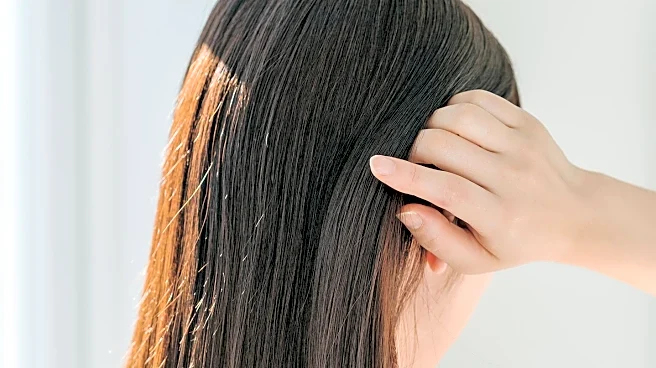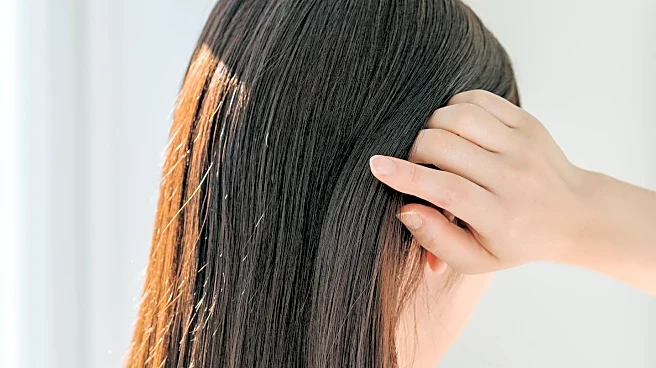What's Happening?
A greasy scalp could be an early indicator of androgenetic alopecia, commonly known as pattern baldness, according to trichologist Sophia Emmanuel. This condition affects approximately 50 million men and 30 million women in the U.S. and is caused by a genetic sensitivity to the hormone dihydrotestosterone (DHT). DHT can cause hair follicles to shrink, leading to thinner hair and increased shedding. Excessive sebum production, which can result in a greasy scalp, may exacerbate this condition by clogging hair follicles and irritating the scalp. Factors such as hormone fluctuations, genetics, diet, and stress can influence sebum production. Emmanuel suggests that individuals experiencing these symptoms seek professional evaluation and consider treatments like Rogaine or low-level laser therapy.
Why It's Important?
Understanding the link between a greasy scalp and potential hair loss is crucial for early intervention and treatment. Androgenetic alopecia is the most common form of hair loss worldwide, and early detection can help manage the condition more effectively. This information is particularly significant for millions of Americans who may be at risk. By addressing the underlying causes of excessive sebum production, individuals can potentially slow down or reverse hair thinning. The advice provided by experts like Emmanuel can guide those affected towards appropriate treatments, which may include both medical interventions and lifestyle changes.











